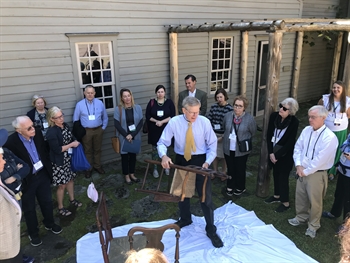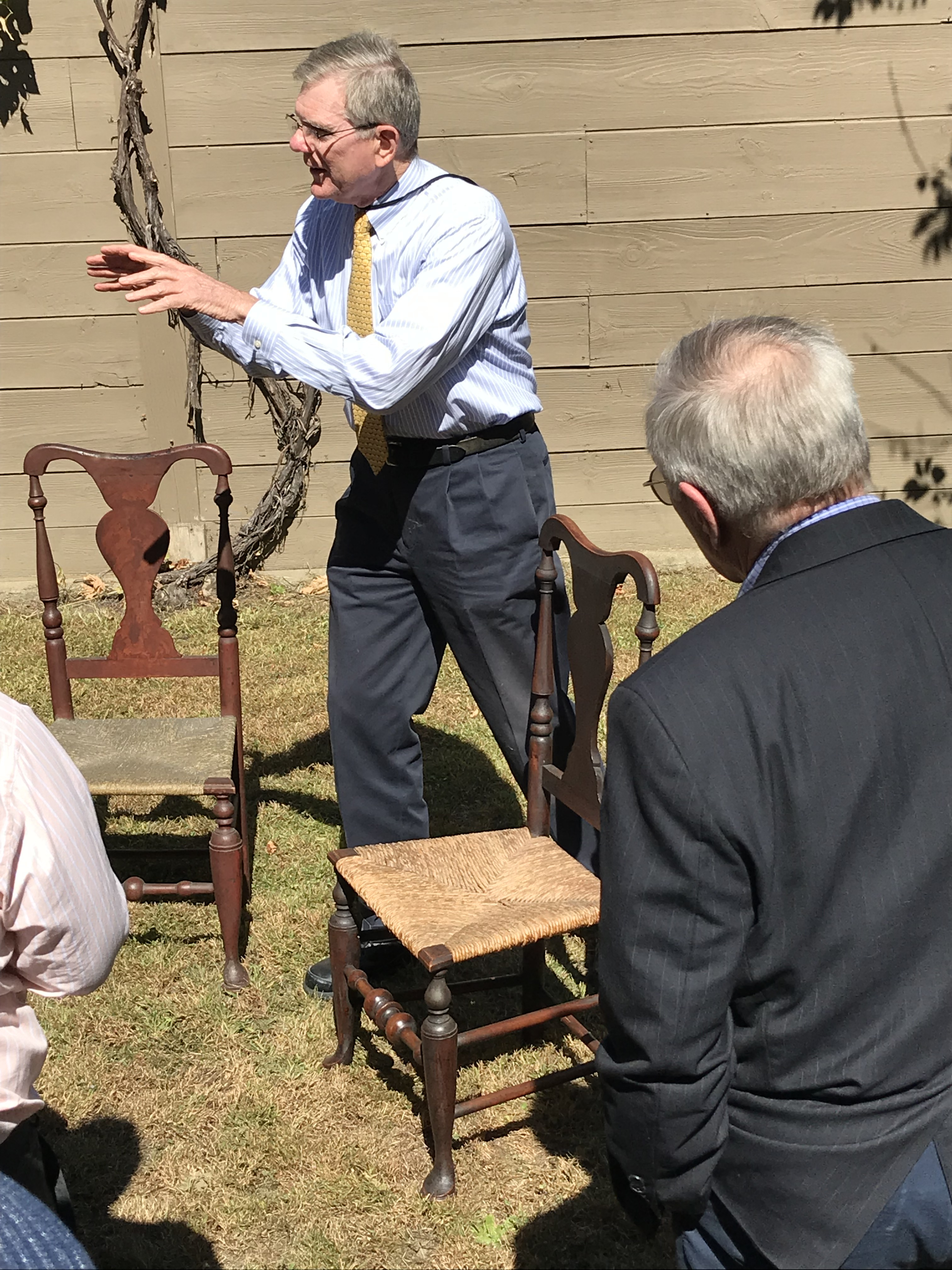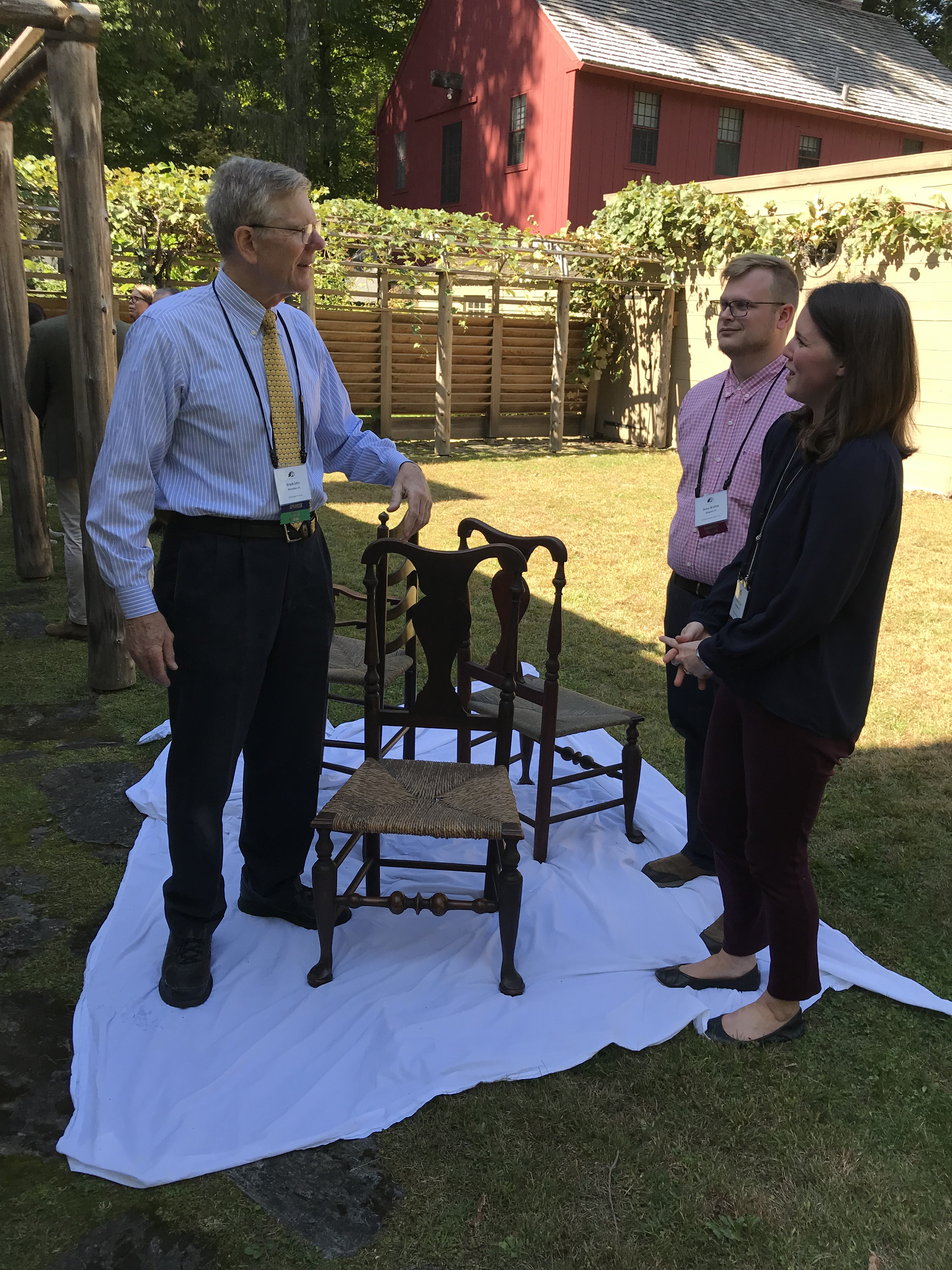Furniture Connoisseurship with the Decorative Arts Trust: Discussing Construction, Condition, and Quality to Demystify York Chairs
Popular Tags

Friday, October 18, 2019 in Education
by Matthew A. Thurlow
During the Decorative Arts Trust's recent fall symposium in the Berkshires, participants were treated to an informative object study on American furniture. This exercise is one of many examples of how the Trust's programs benefit our friends in the appraisal community.

Mission House in Stockbridge, Massachusetts.
As part of a full-access tour of Mission House in Stockbridge, MA, we analyzed a group of chairs that have puzzled curators, collectors, and appraisers for decades. Leading the discussion was renowned furniture historian Brock Jobe, Emeritus Professor of American Decorative Arts at Winterthur Museum, Garden & Library. Earlier in the day, Brock delved into the superb collection at Mission House during a lecture about Mable Choate, who purchased the house with the intent of creating a museum. Choate assembled the collection in the 1920s and 1930s by acquiring period-appropriate antiques from leading dealers of the era, such as Israel Sack.

Brock Jobe introduces the York chairs to Trust members outside Mission House.
Brock selected two related chairs as part of this exercise in connoisseurship. Commonly called "York chairs," their design and execution create confusion in the decorative arts community. Upon first glance, the typical assumption is that such objects represent the work of a rural craftsman working in the Colonial era. The chair frames are almost exclusively the work of a joiner, who turned elements on the lathe, the only exceptions being the crest rail, splat, and stay rail that make up the back. The seats are fashioned from woven rush, indicative of a rural place of manufacture. The vasiform splat and turned legs suggest an attempt to imitate the late Baroque or Queen Anne style of seating furniture popular in the mid-18th century.

Brock Jobe discusses the turning techniques that joiners used to frame these chairs.
Past research has proven, however, that these chairs date to the post-Revolutionary period and were produced by chairmakers in New York City and nearby communities. While most of their contemporaries sold wares in the fashionable Neoclassical style, a group of joiners found a ready market for these idiosyncratic chairs. The place of origin and date of manufacture are conclusively linked to the late 18th century because many examples are marked by their makers. For example, one of the chairs at Mission House is stamped on the top of the front legs with the name Jacob Smith, a New York City joiner who operated from the 1780s to the 1790s and was president of the chairmaker's guild.

Brock Jobe compares the condition and surface of the two chairs.
As part of his discussion, Brock highlighted issues of condition, surface, and quality. By comparing the two York chairs along these lines, Trust members were able to refine their understanding of what makes one object superior to a similar example. While this process is subjective in nature, the exercise required us to look closely and consider which chair was more desirable. For further assessment, a pair of York chairs by Jacob Smith are currently on the market at Nathan Liverant & Son in Colchester, Connecticut.

Brock Jobe analyzes the York chairs at Mission House with our Curtis Symposium Scholarship recipients.
Amy Parenti, an ISA appraiser with Freeman's in Philadelphia, is a regular attendee at Trust programs. She suggests, "attending the Decorative Arts Trust fall and spring symposia offer personal property appraisers a path to advance their connoisseurship skills necessary in preparing accurate reports. Participants attend lectures by experts on a variety of subjects, attend tours of museums with an insider touch, and experience significant private collections normally not available to the average visitor—all that expand one's knowledge base."
The Decorative Arts Trust is a non-profit organization that promotes and fosters the appreciation and study of the decorative arts. To support this mission, the Trust offers symposia, study trips abroad, special programs, grants, and scholarships as well as financial assistance for research, exhibitions, and publications. Become a member or learn more today.
Matthew A. Thurlow is the Executive Director of the Decorative Arts Trust.
